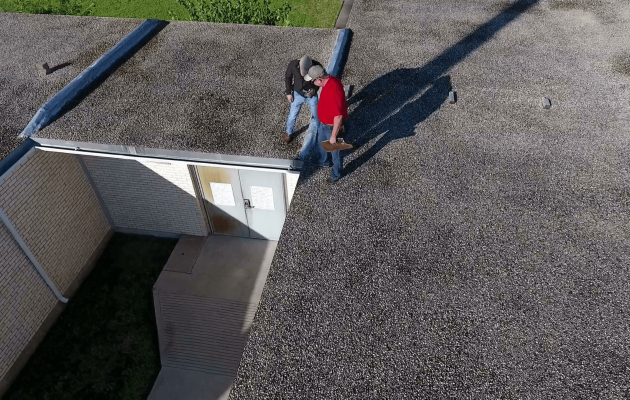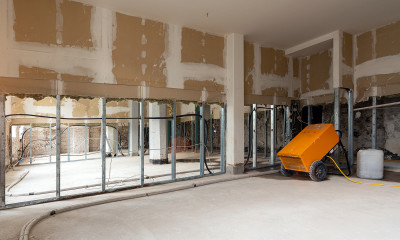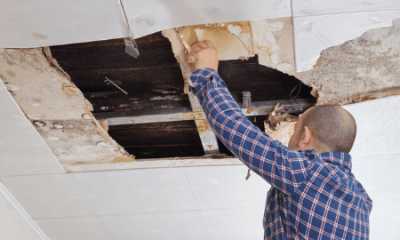Understanding Commercial Flat Roofing Systems
Know the details of your system in case you need a flat roof repair.
The roof is perhaps the most important component of a commercial building. Its durability and protective properties are relied on to withstand the elements for many years. Roof damage can leave business owners at odds with their insurance carriers over any claims. The type of roofing system on your commercial building can dictate what kind of damage you might face from hail, hurricanes, or high winds.
Let's look at the intricacies of the most popular commercial flat roofing systems and the challenges faced by those with weather-related roof damage claims.
Thermoplastic Polyolefin (TPO)
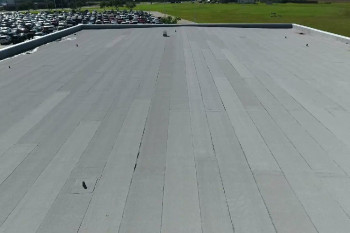
TPO is the most commonly used roofing material for commercial structures. Made from a polymerized combination of polypropylene and ethylene-propylene rubber, TPO is a strong roofing system that resists damage and is easy to install. While slightly more costly than other roofing systems, a TPO flat roof reflects heat allowing for HVAC cost reduction. Its highly reflective surface makes it a good choice for hot, sunny climates.
Polyvinyl Chloride (PVC)
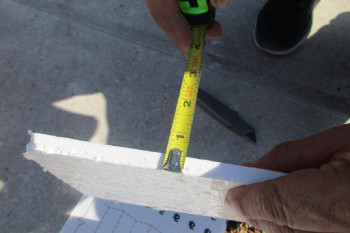
PVC roofing is constructed of plastic that is woven together. Roofing membranes are made of two layers of mixed vinyl resin, heat stabilizers, plasticizers, ultraviolet light inhibitors, biocides, and color pigments. While PVC provides good insulation that is water-tight, it does not perform very well against hail. A PVC flat roof can also shift if it is installed on top of asphalt, causing loss of full protection and opening opportunities for water leaks.
Modified Bitumen Flat Roof
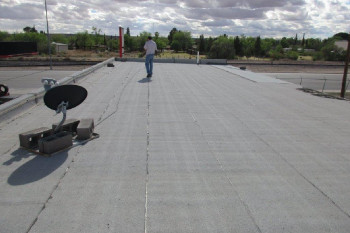
Known as asphalt in the U.S., bitumen is a waterproof substance that is produced from the distillation of crude oil. It is made of complex hydrocarbons and contains elements such as iron, calcium, sulfur, and oxygen. Modified bitumen contains a rubbery tar substance that absorbs heat.
Usually, the modified bitumen roof cost is slightly less expensive than other types of commercial flat roofing. It is most often used for institutional and governmental roofing systems.
Built-up Rock Ballast
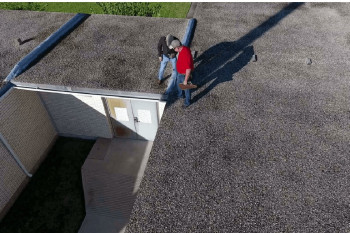
A built-up roof (BUR) is constructed by alternating roofing elements such as felt, hot asphalt, and small rocks or pea gravel ballast. A ballasted roof is energy efficient in that it absorbs heat, preventing the sun from heating up roofing materials below. It is also good protection against hail.
Built-up rock ballast roofing has begun to fall out of fashion in coastal areas, however, as damage can occur when the rocks get blown off by hurricane-force winds. In the City of Houston, crushed stone and gravel roof coverings are prohibited. This does not apply to ballast rock with a minimum diameter of 1 1/2 inches, however.
Foam
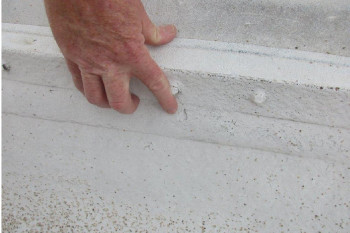
Foam roofing is a spray-on material made of polyurethane foam and an elastomeric coating. It is lightweight and seamless and can be overlayed on top of existing roof systems. Incredibly strong and durable, foam roofing is also waterproof and wind-resistant. It can be applied atop virtually any type of existing commercial roofing system.
On the downside, foam roofing is more expensive than other types of roofing and requires specialized training to spray the polyurethane foam with accuracy.
Use Us to Secure a Settlement for Complete Flat Roof Repair
When it comes to hail damage, our public adjusters at Jansen/Adjusters International understand that a roof does not perform on its own. It is always a system that involves flat roof installation, flat roofing membranes, and means of fastening. If any part of that system is damaged, then the entire roof is compromised. Sometimes, insurance companies will deny your claim if the hail damage is not obvious.
That is why we work thoroughly on your behalf to prove visible and hidden damage on top of and beneath EPDM rubberized roofing and other types of commercial flat roofing.
Tips To Maximize a Hail Damage Claim for Commercial Flat Roofs
Whether it is a TPO flat roof, PVC flat roof, EPDM flat roof, or modified bitumen flat roof, each roof presents challenges in identifying and documenting hail damage for a claim.
TPO Flat Roof Hail Damage
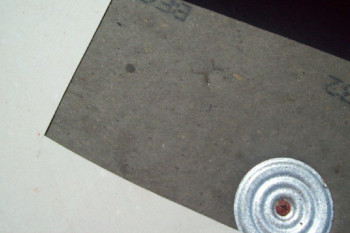
- With this roof, you are dealing with soft metals, so check the caps and collars in particular for hail damage.
- The hail could be the size of a baseball or pea — one divot left unchecked and untreated can stretch and cause flat roof leaks in heavy rain.
- Your public adjuster can help locate a representative from the roofing manufacturer to core the roof to help check to see if the IsoBoard has been fractured.
- Do not allow any coring before without the involvement of the manufacturer/installer, as it may interfere with the roof’s warranty.
PVC Flat Roof
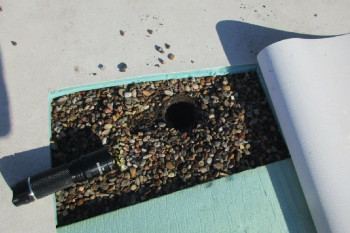
- Since this is a plastic roof with a woven pattern, you can see hail damage easily as opposed to the smoothed surface of a TPO flat roof.
- PVC deteriorates badly after 10 years unless there is a coating. After a hailstorm, clean up your roof with Windex or another solvent to make the hail hits more visible to the insurance company’s adjuster.
Modified Bitumen Flat Roof Hail Damage
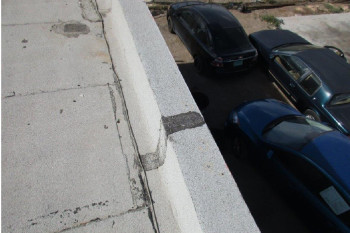
- Also known as Mod Bit, this granulated roof is applied two ways — torch down or mop down. Overall, it is rugged, making hail hits hard to detect.
- Inspect the edges of your roof where it will be softer for hail to penetrate and break layers in your roof system. If spotted, talk to our public adjusters about how your insurance policy could cover mop-down and torch-down roof repair.
- If you have parapet walls, an experienced public adjuster will check where it rolls up the wall to determine the area of related roof damage.
Built-Up Rock Ballast
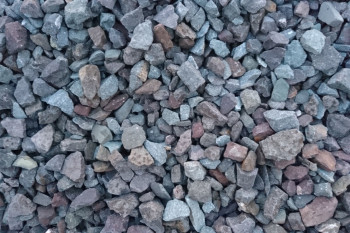
- Go to the edges of the roof to locate hail damage.
- Different from a rubber flat roof, rock ballast holds moisture and hides it. If you see leaks inside your building, have a public adjuster use handheld thermal imaging on top of the roof to detect water damage.
- Have a public adjuster also take core samples to find the real damage.
Foam Roof
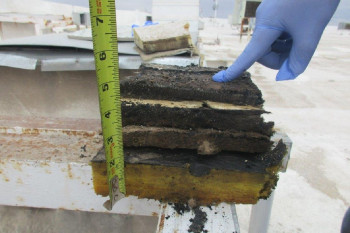
- Once hail hits and breaks the first layer of a foam roof, that layer will become a sponge for water.
- If the damage penetrates deep enough to affect two layers, the roof may begin to pop up, creating bubbles within six months, destroying the roof system and calling for a complete replacement.
- Have a public adjuster arrange to take core samples to determine the extent of damage to the roof system.
What to do When Inspecting For Hail Damage
Have your roof inspected before your insurance carrier’s adjuster arrives to thoroughly mark the hail damage, documenting at least two test squares as your evidence. A 10X10 test square will show how the shingles were impacted by hail hits.
Contact us if you are past this step and unsure whether your commercial roof damage claim is being properly assessed. We will help prove your claim and get you a full and fair settlement — getting you back to business faster.
Watch our webinar on getting a full settlement from a hail damage insurance claim for more insight.
Contact our licensed public adjusters to help you in this process

